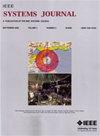类跳跃FlexRay协议与ncs动态控制的ga优化协同设计及其应用
IF 4.4
3区 计算机科学
Q1 COMPUTER SCIENCE, INFORMATION SYSTEMS
引用次数: 0
摘要
研究一类离散时间网络系统的类跳变FlexRay协议(FRP)与动态控制的协同设计问题。为了解决传感器到控制器通信网络中通信资源的限制以及非周期性拒绝服务攻击,提出了一种跳变FRP。该协议具有传统FRP时间触发机制和事件触发机制的特点。此外,该协议能够避免选择受DoS攻击影响的传感器。随后,设计了一组与传感器节点选择相关的动态输出反馈控制器,以保证闭环系统具有规定$H_\infty$性能的有限时间有界性。然而,协议与动态控制的协同设计问题包含了更多的非线性项,使得问题的求解更具挑战性。为了解决协同设计问题,提高系统性能,提出了一种基于遗传算法的控制器设计方法。最后通过一个数值算例和一个两区电力系统算例说明了所提方法的有效性。本文章由计算机程序翻译,如有差异,请以英文原文为准。
GA-Optimized Co-Design of Jump-Like FlexRay Protocol and Dynamic Control for NCSs and Its Applications
This article is considered with the co-design problem of jump-like FlexRay protocol (FRP) and dynamic control for a class of discrete-time networked systems. A jump-like FRP is proposed to address the constraints of communication resources as well as nonperiodic denial of service (DoS) attacks in the sensor-to-controller communication network. The proposed novel protocol has the characteristics of traditional FRP time-triggered and event-triggered mechanisms. In addition, such protocol is able to avoid selecting sensors affected by DoS attacks. Subsequently, a set of dynamic output feedback controllers related to the selection of sensor nodes is designed to guarantee the finite-time boundedness of the closed-loop system with the prescribed $H_\infty$
求助全文
通过发布文献求助,成功后即可免费获取论文全文。
去求助
来源期刊

IEEE Systems Journal
工程技术-电信学
CiteScore
9.80
自引率
6.80%
发文量
572
审稿时长
4.9 months
期刊介绍:
This publication provides a systems-level, focused forum for application-oriented manuscripts that address complex systems and system-of-systems of national and global significance. It intends to encourage and facilitate cooperation and interaction among IEEE Societies with systems-level and systems engineering interest, and to attract non-IEEE contributors and readers from around the globe. Our IEEE Systems Council job is to address issues in new ways that are not solvable in the domains of the existing IEEE or other societies or global organizations. These problems do not fit within traditional hierarchical boundaries. For example, disaster response such as that triggered by Hurricane Katrina, tsunamis, or current volcanic eruptions is not solvable by pure engineering solutions. We need to think about changing and enlarging the paradigm to include systems issues.
 求助内容:
求助内容: 应助结果提醒方式:
应助结果提醒方式:


